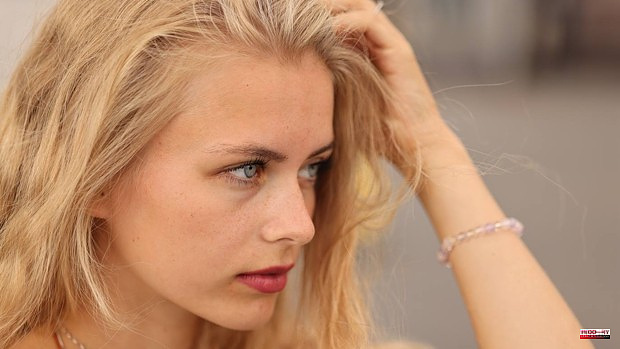Fortunately, the harmful effects of the sun are becoming more and more known, both for the health and for the beauty of the skin, which has made sunscreen the essential cosmetic in the daily routine of many people. However, while on the beach or in the pool most know the need to reapply the cream after bathing or after two hours, throughout the day reapplication is a pending issue for most.
The facial routine recommended by dermatologists, pharmacists and skin experts in the morning is cleansing, prevention with an antioxidant serum rich in vitamin C, hydration and sun protection. Next, makeup would be applied.
But, for the photoprotector to be really effective and avoid spots and other negative consequences of the sun, it is necessary to reapply it approximately every two hours, even if the skin is made up.
«The sunscreen must not only be applied in the morning before putting on make-up, but it must also be retouched throughout the day, since there is no total sun protection that lasts 24 hours a day. Usually 80% of the barrier capacity of a sunscreen is lost 2-3 hours after application, therefore, it is necessary to be well protected from the sun to make photoprotection touch-ups, "says Dr. Elena Tevar, dermatologist International Dermatological Clinic.
All people should reapply sunscreen every two hours, but especially those who have a specific problem, such as rosacea, the lowest phototypes, those who spend more time outdoors exposed to UV rays (playing sports, for example) ... In addition, the dermatologist insists on situations like these: «when you are inside a car or in an interior space next to the window, since ultraviolet A rays are capable of passing through the glass. If you are indoors, without sunlight, it would not be necessary to reapply the photoprotector except half an hour before going out into daylight.
If you don't wear makeup, it's easy to put the sun cream back on (which should always go in your bag), but on skin with makeup you run the risk of damaging your makeup. Fortunately, there are formats that facilitate reapplication, as María Escobar, co-owner of SkinPharmacy Jorge Juan 34, explains, “Formats such as mists have been created, which stand out for their lightness and ease of application. They are easy to wear and do not make the skin greasy. In addition to their main function, they refresh the skin and rehydrate, something absolutely necessary in the hottest seasons, managing not only to protect from the dreaded UVA rays, but also to stop the loss of water from the tissues.
Another format that is also very practical for protecting skin with makeup from the sun are powders, which Dr. Elena Tevar recommends especially for mixed and oily skin, "in addition to sun protection, they mattify shine."
Regardless of whether you wear makeup or not, applying the right amount of sunscreen is essential for your sunscreen to do its job. Patricia de Román and María Escobar from SkinPharmacy Jorge Juan 34, recommend “applying the same amount of photoprotector in all applications of the day. To protect the face properly there is the trick of the two fingers of cream: fill the index and ring finger with cream from the tips to the middle and draw two lines on the face. That is the measure that is needed.” In the case of sprays and mists, Dr. Elena Tevar recommends about 6 sprays. "A container of photoprotector of about 200 ml used by a single person daily, if you use the correct amount, should last about 10 days."
Pharmacist María Escobar, who is also an expert in nutrition, points out that “sun nutricosmetics prepare and increase the skin's resistance to sun damage with formulas rich in antioxidants and anti-inflammatory ingredients and active ingredients that control tyrosinase activity. However, it is an extra protection, but never a substitute for the external photoprotector».












